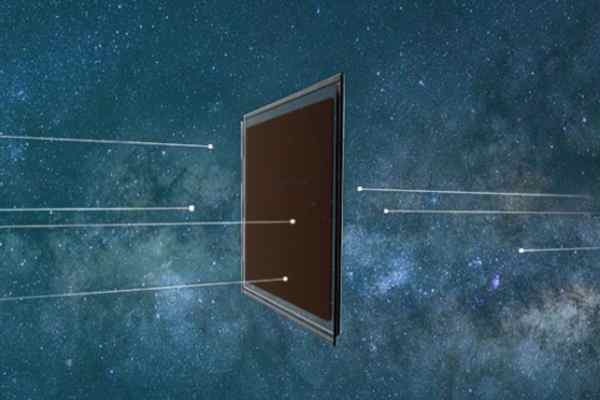The next-generation gadgets powered by indoor light
Could this new tech that draws energy from ambient light pave the way for a battery-free future?

New solar technology that can draw power from low-level indoor light promises to change the game for small electronic devices.
The new solar cell from US startup Ambient Photonics, which renders polluting batteries obsolete, was on show at the recent Consumer Electronics Show (CES) in Las Vegas.
Remote controls, wireless keyboards, computer mice, sensors and other electronics – all powered by ambient light – were on display at the company's stand.
California-based Ambient Photonics was founded in 2019 with an aim to bring low-light energy harvesting technology to the masses. The startup’s tech is based on a dye-sensitised solar cell that specialises in low-light environments with the potential to power billions of connected devices in the home and beyond (see box).
This tech is now on the brink of commercialisation with the first large-scale shipment of indoor low-light cells recently produced at Ambient Photonics' new facility in California.
Ambient Photonics solar cells are now being integrated into several products including Universal Electronics remote controls and connected smart home devices, Chicony PC products, and E Ink’s electronic paper tech.
"In today’s world, connected electronics require ongoing power, which too often derives from disposable or rechargeable batteries."
While small solar cells have been used for several years to power portable calculators, the latest innovation from Ambient Photonics is a bifacial solar cell that can harvest power from both sides of the device whether it rests face-up or face down, allowing it to power more energy-intensive devices.
By going bifacial, the tech can harvest three times more power than existing indoor solar tech and one and a half times more power than single-sided tech from Ambient Photonics.
Last week, the company announced a collaboration with Google that will see the first commercial application of the bifacial solar cells unveiled later this year (in a product that is yet to be announced).
Devices integrating the tech don’t need to house batteries, which are known to leak contaminants in landfill, enabling electronics manufacturers to make thinner, lighter products with a much lower carbon impact.
“In today’s world, connected electronics require ongoing power, which too often derives from disposable or rechargeable batteries,” Ambient Photonics’ Co-Founder & CEO Bates Marshall said.
“Solar power has long been an option for certain low-power electronics like calculators or toys, but it’s taken breakthrough science from Ambient Photonics to develop high-performance solar cell technology for mass-market devices.
“Power is a meta resource — the key to enabling electronics manufacturers to unleash the full, ubiquitous potential of connected devices. Ambient light power is the key to doing so efficiently and sustainably by keeping billions of batteries out of landfills and allowing companies to minimise carbon emissions.”
The company’s early investors include Amazon’s Climate Pledge Fund and venture capital firms.
Stretching the power of solar
Meanwhile, wearable solar-powered electronic devices are a step closer thanks to the development of a stretchy new conductive polymer by researchers in South Korea.
The team from Korea Advanced Institute of Science & Technology say their material’s high performance and elasticity makes it the highest performing stretchable organic solar cell.
The newly developed polymer material demonstrated the world's highest photovoltaic conversion efficiency – 19 per cent – while functioning even when stretched for more than 40 per cent of its original state, the researchers wrote last month in the journal Joule.
Ambient Photonics says its low light energy harvesting photovoltaic (PV) technology was Inspired by photosynthesis, but this dye-sensitised cell doesn’t rely on the power of the sun. Instead, it uses low-level ambient light to generate power. The cell generates more than three times the power of conventional indoor PV technologies from a broader spectrum of indoor and outdoor ambient light, the company says. To keep the price of its technology down, the company uses industrial solar printing technology to coat its proprietary chemistry on thin, durable glass substrates, enabling it to produce photovoltaic cells of almost any size and shape.





